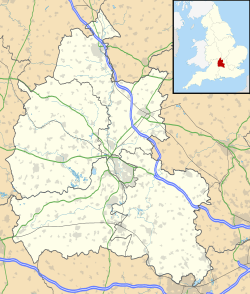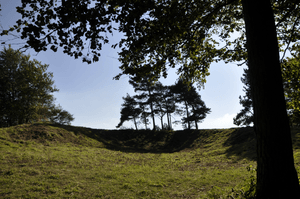Scutchamer Knob facts for kids
Scutchamer Knob, also known as Cuckhamsley Hill, is a very old mound of earth. It was built long, long ago during the Iron Age, which was a time when people used iron tools. This special mound is called a round barrow, which means it was likely a burial place. You can find it along the Ridgeway National Trail near East Hendred Down in Oxfordshire, England. It used to be part of Berkshire county.
Contents
What is Scutchamer Knob?
Scutchamer Knob is not just a simple hill; it's an ancient monument with a rich history. It's known by a few different names, like Cuckhamsley Hill, Scotsman's Knob, and Beacon Hill. These names often tell us something about its past or how people used it.
A Look at Its History
Long ago, this mound was called Cwichelmeshlaew or Cwichelm's Barrow. Imagine, over a thousand years ago, in the year AD 636, history says that King Edwin of Northumbria fought and killed Cwichelm of Wessex right here!
Later, during the Middle Ages, Scutchamer Knob became a very important meeting spot. People would gather here for a "shire moot," which was like a big local market or a place where important decisions for the area were made. This tradition continued for many years until it was stopped in 1620.
For a long time, people believed that Cwichelm himself was buried inside the mound. However, people have dug into the mound several times to look for clues, but they haven't found any major discoveries that prove it's his burial place.
In the year 1006, an old book called the Anglo-Saxon Chronicle tells us something interesting. It says that the Danes, who were Viking raiders, marched to Cuckhamsley Hill. They believed that if they reached this hill, they would be safe and would never have to return to the sea.
How Scutchamer Knob Looks Today
Originally, Scutchamer Knob was probably a perfect round mound, like many other ancient burial sites. But over time, its shape has changed. Now, it looks more like a semi-circle with a rounded front.
One reason for this change might be "vandalism." In the past, some people believed that valuable treasures were hidden inside the mound. Because of this belief, they might have dug into it, hoping to find riches, which would have altered its original shape.
Where Did the Name "Scutchamer" Come From?
The name "Scutchamer" is quite unique, and there are a couple of ideas about where it came from.
One idea is that "Scutchamer" might have developed from its older name, "Cwichelmeshlaew." Over hundreds of years, words can change their sound and spelling, leading to new names.
Another interesting idea connects the name to local activities. It might come from the word "scutcher." A scutcher was someone who "scutched" or beat flax plants. Flax is a plant used to make linen fabric. Beating the flax helped to loosen its fibers. This theory suggests that Scutchamer Knob was a place where local fairs were held, and people traded products made from flax.



